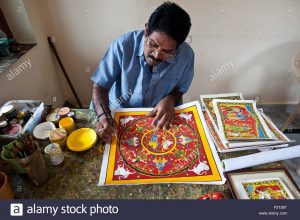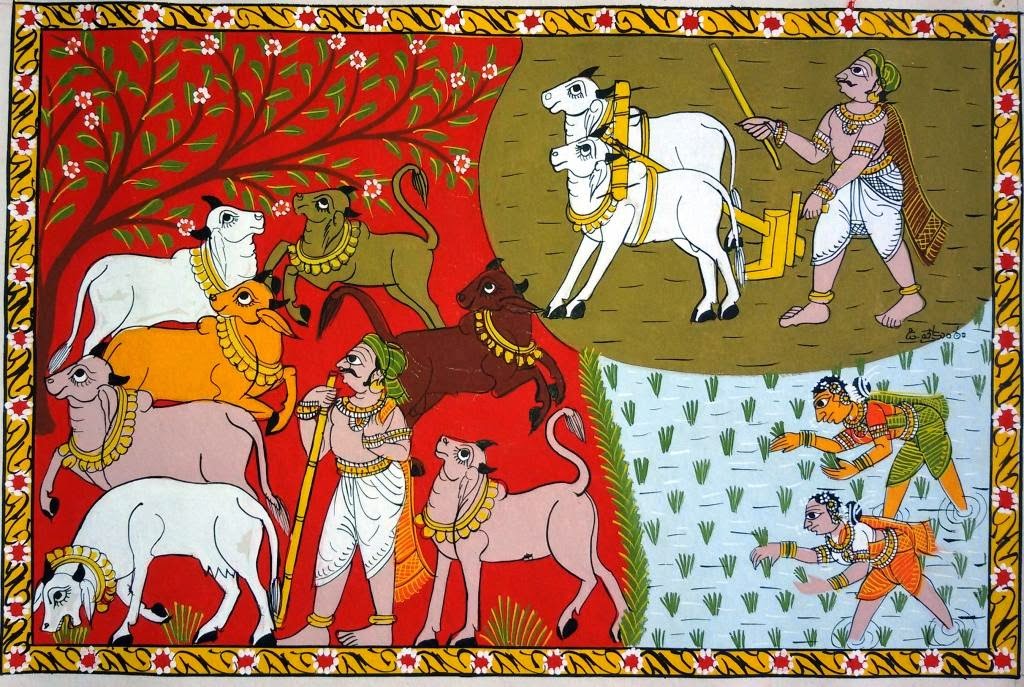Unique Cheriyal Scroll Paintings
Cheriyal Scroll Paintings is a very cool and ancient art method. India has long been considered unique for the vast and inordinate amount of rich heritage that lied buried in its past. A nation full of culture and tradition, India is the home to several art forms scattered across the country from the North to the South.
One such unique art is that of the Cheriyal scroll paintings, mostly found in the state of Telangana.
Scroll paintings have been found in all regions of India, albeit with their own unique features and regional names such as the Prashasti Patra in Maharashtra and Gujarat, and the Pata Chitra tradition of West Bengal in Orissa.
The Cheriyal paintings originate from the small and quaint village of Cheriyal, near Hyderabad in Telangana. It is a type of narrative painting, painted on a long scroll of paper and narrating a well-known story from the Puranas or the epics of Indian culture.

The Cheriyal art is a stylized version of the Nakashi art.
The Nakashis were the wandering bards of Andhra who made dolls as well as the scroll paintings and they were born from the oral traditions of the common village people in Cheriyal- mostly the marginalized castes who had no access to formal writing and education, and thus no way of recording their tales except through pictorial representation.

A few common features of the paintings are:
- They are mainly influenced by the temple art tradition and Kalamkari traditions of Telangana.
- Paintings are mostly centered around the heroic tales of regional and local origin and heroes who perform on the margins of the greater epics.

- Each village had its own favorite protagonists, who they mainly based their stories on.
- The scroll was about 45 feet in length and had approximately 35-40 panels, each consisting a small episode of the whole tale.
- In some villages, it was even customary to sacrifice a goat after the recitation of a scroll.
The tradition of the scroll paintings also led to the development of the story telling communities of Telangana, known as Kaki Padagollu. These communities displayed the scroll paintings, as they wandered from one village to another, and sung and dance while telling the stories narrated in the scrolls.
Each scroll panel would be rolled out as the story was told, and the stories catered particularly to the caste for which they were performed.

Now, very few families in the Cheriyal village are still involved in the creation of these beautiful works as they have lost their popularity with the advent of popular western media like television and films.
We, as conscious human beings, should try to make people aware of these disappearing art forms so that the scroll paintings regain the respect and awe that they truly deserve as one of the earliest forms of pictorial representation and narrative art.



